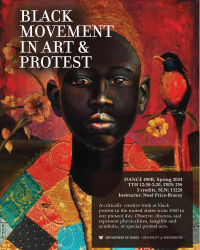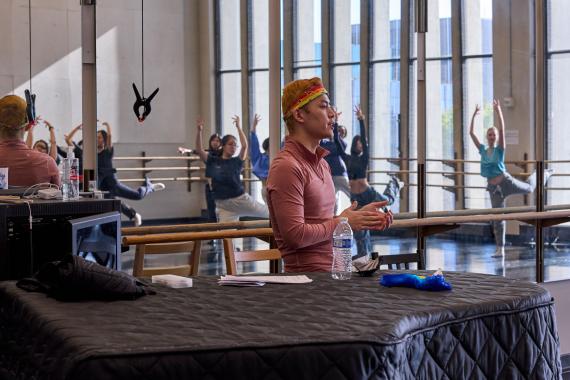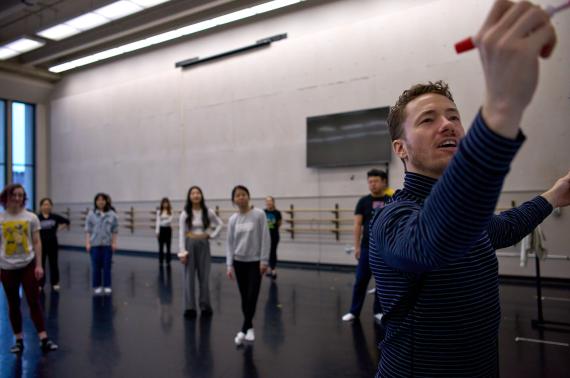Black Movement in Art & Protest, Imaginative Realms- A Worldbuilding Laboratory, Experiential and Historical Understanding of Chinese Dance: These are the titles of courses that second-year MFA Dance candidates are teaching in the Department of Dance this quarter. This list of courses reflects the increasingly inclusive scope of the MFA in Dance program at the UW, which previously focused on modern and contemporary dance primarily rooted in Euro-American traditions. Now, the program is growing to support the development of educators in any dance form by making changes to admission cycles, program curriculum, and the graduate student performance company Chamber Dance, to align with this broader focus while continuing to advance modern and contemporary dance.

However, in addition to being students themselves, like most graduate programs in the US, the MFA candidates play a vital role in the department's workforce as instructors and teaching assistants. While having a combined number of six graduate students every year to support the robust list course offerings each quarter was indispensable, it also demanded that the full-time faculty stretch their time between teaching seminar courses to the first-year grads and guiding second-year students on their final research and course creations, while simultaneously supporting undergraduate major, minor, and honors students.

MFA candidate Jeremy Zihao Yuan, teaching Chinese Dance. Photo by Michael B Maine.
Now, the MFA program will expand its admissions to five (or six) students every two years. By doing this the department will effectively keep the much needed teaching support from the graduate students, while also offering more attention to each cohort in their stage of the program. The cherry on top is that this will provide a more sustainable workload for the full-time faculty. The graduate seminars will only need to be taught once every two years, allowing the time necessary for faculty to broaden and improve their course content between offerings, and enhancing faculty participation in the undergraduate program.
The educational mission of the undergraduate program has been transforming in the Department of Dance over the last 15 years. Several rounds of curricular changes to the dance major have passed since the 2010s, such as diversifying course requirements to involve techniques beyond ballet and modern, including idioms not traditionally associated with dance forms taught in academia. These changes have been largely successful and gaining momentum, with enthusiasm from the student body reflected in bursting course enrollments in classes such as Commercial Dance, Street Styles, Capoeira, Tango, Salsa, and many more. As the undergraduate program has changed, the Department’s teaching needs from the graduate students have also changed. This trickle-down (or in this case, up) effect will also reach the repertoire performed by the resident graduate program performance group, the Chamber Dance Company.

MFA candidate Derek Crescenti, teaching modern dance. Photo by Michael B Maine.
For 30 years, the renowned Chamber Dance Company was the representation of the UW Dance graduate program as a repertoire company based on the Western theatrical modern and contemporary dance canon. Now, as the department continues to dial a broader focus, the Chamber Dance Company is also pivoting in its scope. This October, the concert program will showcase all original premieres by the second-year MFA candidates, as well as a work set by Bebe Miller, with performers including professionals from the Seattle dance community.
In the years and months ahead, the MFA in Dance program will continue to push itself in the direction of greater inclusivity through its curriculum, performance repertoire, and recruitment. While the demands for teachers in higher education that have a more diverse skill set in dance styles is increasingly self-evident, the recruiting of such individuals and ensuring that they are well supported at an institution–one that, like most Western universities, traditionally excluded such practitioners in higher education–will be an ongoing effort.
